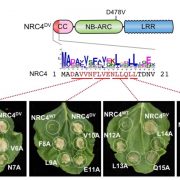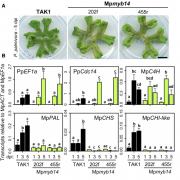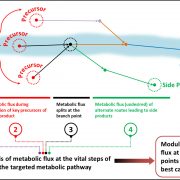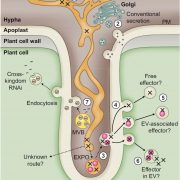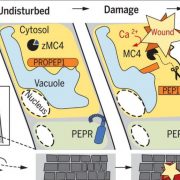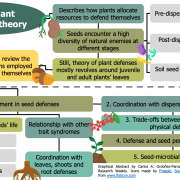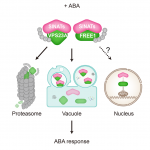Spatial profiling of immune competence in plant roots (bioRxiv)
 Plant roots should prevent immune activation by innocuous soil microbiota, as constitutive immune activation is harmful to plant growth. Previous studies have indicated variable immune competence of different root cell types and developmental zones, but this is currently poorly understood with the fine spatial resolution. Emonet et al. combined cell-type specific expression of the immune receptor FLS2 (FLAGELLIN SENSING 2) and two fluorescent defense markers, PER5 (PEROXIDASE 5) and MYB51 (MYB DOMAIN PROTEIN 51), to spatially and quantitatively map the immune competence of root cells. Ectopic expression of FLS2 altered spatial expression patterns of PER5 and MYB51 induced by flg22, an FLS2 ligand. Interestingly, PER5 expression was limited to FLS2 expressing cells, while MYB51 expression was not, demonstrating that this analysis can distinguish cell-autonomous and non-cell-autonomous responses. By using a Ca2+ reporter, the authors found non-cell-autonomous induction of a Ca2+ wave upon flg22 treatment. They also found that lignin deposition occurs in various tissues in a cell-autonomous manner, whereas suberin lamellae deposition is endodermis-specific. Strikingly, ectopic expression of FLS2 in epidermal meristematic cells made plants hypersensitive to flagellin peptides derived from commensal bacteria, leading to root growth inhibition by a commensal strain that is harmless to wild type plants. This study reveals varying cell-autonomy and tissue specificity in plant immune responses and the potential importance of these for plant health. (Summary by Tatsuya Nobori @nobolly) bioRxiv 10.1101/2020.08.03.233817
Plant roots should prevent immune activation by innocuous soil microbiota, as constitutive immune activation is harmful to plant growth. Previous studies have indicated variable immune competence of different root cell types and developmental zones, but this is currently poorly understood with the fine spatial resolution. Emonet et al. combined cell-type specific expression of the immune receptor FLS2 (FLAGELLIN SENSING 2) and two fluorescent defense markers, PER5 (PEROXIDASE 5) and MYB51 (MYB DOMAIN PROTEIN 51), to spatially and quantitatively map the immune competence of root cells. Ectopic expression of FLS2 altered spatial expression patterns of PER5 and MYB51 induced by flg22, an FLS2 ligand. Interestingly, PER5 expression was limited to FLS2 expressing cells, while MYB51 expression was not, demonstrating that this analysis can distinguish cell-autonomous and non-cell-autonomous responses. By using a Ca2+ reporter, the authors found non-cell-autonomous induction of a Ca2+ wave upon flg22 treatment. They also found that lignin deposition occurs in various tissues in a cell-autonomous manner, whereas suberin lamellae deposition is endodermis-specific. Strikingly, ectopic expression of FLS2 in epidermal meristematic cells made plants hypersensitive to flagellin peptides derived from commensal bacteria, leading to root growth inhibition by a commensal strain that is harmless to wild type plants. This study reveals varying cell-autonomy and tissue specificity in plant immune responses and the potential importance of these for plant health. (Summary by Tatsuya Nobori @nobolly) bioRxiv 10.1101/2020.08.03.233817


